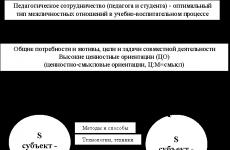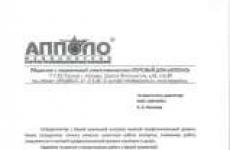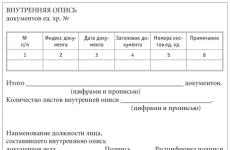Treatment of rafters with fire retardant. Fire-retardant protection of wooden roof elements. Fire retardants are applied
Such a lack of wood as flammability and susceptibility to bioinfluences, at the same time, indicates the naturalness and environmental safety of the material.
Mold fungi often appear on damp lumber that is not properly stored: close to each other, without the possibility of ventilation.
Insects can cause serious harm: grinder beetles, bark beetles, larvae, carpenter butterflies and others. In deep wormholes - insect passages - as a rule, various fungi appear.

Wood of various species resists external biological influences in different ways.
In accordance with this indicator, there is a division into four classes of resistance. The most resistant species are pine, ash, oak and larch.
Even slightly damaged elements - boards, beams - are undesirable to use in such a responsible matter as building a roof. However, as a last resort, they can be treated with a disinfectant. Rotten boards are completely unsuitable for use.
- deeply penetrating - impregnation;
- surface treatment - coating.
Antiseptics are divided into:

- water soluble. The powdery substance for use is diluted in water. For example, the Senezh trans antiseptic is diluted in water in the ratio of 1 liter of dry powder to 24 liters of water;
- oily. Substances based on organic solvents - for example, creosote and anthracite oils. For and at home are not suitable due to toxicity.
In order to reduce the financial costs of construction, self-made impregnations are used, for example, based on beer malt.
Also, the rafters are treated with lime or lime with copper sulfate. However, it must be remembered that these are potent and sometimes poisonous substances.
And it is not known how they will behave when interacting with fire retardants and whether they will perform the functions assigned to them.
 With the current variety of special impregnating compositions, it is better to give preference to special water-soluble agents - they are non-toxic, and besides, they provide longer protection. Their cost is incomparable with the possible damage.
With the current variety of special impregnating compositions, it is better to give preference to special water-soluble agents - they are non-toxic, and besides, they provide longer protection. Their cost is incomparable with the possible damage.
What is the consumption of the chemical
Consumption depends on many factors, including the species, the quality of the wood and the section of the timber, weather conditions.
Average indicators: to cover the boards with one layer of water-based antiseptic, you will need 250-500 g / sq. m.
Fire retardants
Reducing flammability is a very important and crucial stage in the construction of a roof.
In a house with a wooden truss system without treatment with fire retardants, in the event of a fire, a situation may arise that the fire master will no longer have anything to save.
To reduce flammability, wood is treated with chemicals - fire retardants, which are saline and non-saline.
 When heated, these substances melt, covering the rafters and sheathing boards with film.
When heated, these substances melt, covering the rafters and sheathing boards with film.
Combustion is not supported without oxygen.
Another option is when oxygen is pushed back from the beam due to the release of non-combustible gases by fire retardants when heated.
Fire retardants are applied:
- smearing the tree with a brush or roller;
- spraying;
- by immersion in a solution;
- under pressure - in autoclaves. In this way, the fastest and deepest impregnation is ensured.
To protect wood, in addition to impregnation with fire retardants, use
special varnishes and paints.
The effectiveness of fire protection is determined in laboratory conditions. 
There are two groups:
- first;
- second.
Consumption of the composition for the 1st group of effectiveness in the case of using, for example, "Neomid 450-1": 250 g per square meter.
The most important thing
You can impregnate the fibers with only one of the compounds - an antiseptic or a fire retardant, the second goes for coating, so you need to decide which is more important in a particular case: to prevent the appearance of rot or to protect the rafters from fire.
Combined impregnation
To save developers from a painful choice, combined impregnations were created - all of them are water-soluble.

In addition to fire retardants and antiseptics, the composition of fire-biological protection may include substances that tone the tree - giving it a shade.
Of course, such a tool is very convenient to use, but some experts criticize its versatility: after all, the service life of fire retardants is less than that of antiseptics.
 And it is not possible to check how well the composition protects the rafter system.
And it is not possible to check how well the composition protects the rafter system.
An example of a product that simultaneously provides protection against insects, rot and against ignition and flame spread is Senezh firebio.
The consumption of such a tool for wood ranges from 300-600 g / sq. m.
The choice of powdery protective substances and liquid formulations is very wide. The Russian market is mainly represented by products of domestic manufacturers.
The order of work
Wooden or board is cleaned of dust and debris, greasy stains, the surface should not be painted or treated with linseed oil.
The tree must be evenly coated with a protective compound. It is recommended to apply at least two protective layers to the rafters and battens.
The main disadvantage of any treatment is that its effectiveness decreases over time, so it is necessary to periodically repeat the application of the protective composition.
The main final part of the construction of the structure of a house, a bath and other buildings is the installation of the sheathing and rafter system. They are made of wood, regardless of what the main material was used for the construction of the walls. Wooden material is durable, the rafter system from it is able to withstand the loads carried out by the roof. Before assembling the roof frame, you need to take care of the protective treatment of the wood.
Why do you need to process rafters?

Over time, the strength characteristics of the battens and rafters may weaken due to the influence of biological agents on them. After all, wood is attractive for the life of insects, fungi, mold, moss, etc. Under their influence, the wooden material begins to deteriorate, and an irreversible decay process is often formed. All this can lead to the destruction of the roof. To protect the rafter system and the crate from the unwanted effects of pests, it is necessary to use special protective compounds.

Fire is another dangerous enemy of wood. Due to the high temperatures, the wood flares up and the fire spreads over the entire surface instantly. This can lead to a fire not only of the roof, but of the entire house.
Means for processing rafters and lathing

It is imperative to purchase antiseptic compounds. Their use will help protect the rafter system from biological pests, insects and decay. To prevent fire and further spread of fire, you can treat the wood of the rafters with fire retardants. In their compositions there are active substances of fire retardants, which are responsible for the resistance of wood material to high temperatures. There are also complex bioprotective agents for the treatment of wooden rafters. They protect the treated wood from the effects of biological pests and from fire.
Expert opinions

It is necessary to provide additional protection for the crate and the rafter system. After all, the tree is known to rot. The microorganisms formed in the wood structure rapidly begin to destroy the fibers, which leads to a deterioration in the strength properties of the entire structure. Antiseptics will help prevent the formation of biological pests for decades. But it is desirable to use powerful formulations that are indelible. It is also recommended to treat the rafter system with deep-penetrating antiseptics, their compositions penetrate deep into the structure of the rafter tree, and provide it with longer biological protection.

For the construction of the truss system, mainly conifers are used, which, due to the presence of their resin structure, ignite instantly. Therefore, it is necessary to use fire retardants, especially if the building is in hot climates. These compositions, after being applied to a wooden material, provide it with a second or first degree of fire resistance, it all depends on the agent itself. It is best to purchase a fire retardant with the highest level of fire resistance. The purpose of fire retardants is to prevent the fire from spreading to the wood. This is done by swelling the film of the composition under the influence of high temperatures, and preventing the penetration of oxygen to the wood material. Therefore, the fire cannot be sustained and gradually begins to die out.

Antiseptic and fire retardants are on sale in a large assortment. You can choose from domestic and foreign compositions. But as practice has shown, Russian goods do not differ in quality, in some ways they even surpass foreign ones. They also have an advantage in terms of the cost of funds. Therefore, we recommend taking a closer look at our manufacturers. The companies Neomid and Prosept are very popular. Their funds will help to reliably protect the rafter system and the crate from decay and fire.
Repeated processing of the rafter system and lathing with various protective compounds is inaccessible or inconvenient for many builders. After all, it takes a lot of time, effort, and including money. Therefore, to save and reduce the operating time, you can use complex fire-retardant compositions. Having processed wooden material with only one means, you can protect it from fire and from mold, rot, moisture, insects. But if complex means are used, their protection period must be taken into account. The composition is valid from the formation of biological agents for about 5 years, and the fire protection will be effective for 10 years.

It is recommended to process a wooden structure only in the warm season, best of all in summer. It makes no sense to apply protective compounds to frozen or damp wood, its fibers will not absorb the protective agent.
Different types of wood resist decay in different ways, and sometimes it is necessary to artificially enhance some of the properties of the material. Coating with special compounds, therefore, is necessary to protect both from fungus and from fire. How to process the rafters first, and what to choose as a supplement, must be decided immediately. After all, it will not be possible to soak them twice: first with an antiseptic, and then with an antipyrine, which protects from the flame. Based on the climate, it is necessary to determine if rot or fire is the primary threat to the lumber. For impregnation, a basic composition is selected that penetrates deep into the wood fiber. Then it is coated with an additional composition.
Antiseptic treatment of the rafters is necessary in order for the wood to serve longer.
Compositions for processing roof trusses
As a rule, in not too arid areas, wood still suffers more from fungus. The processing of rafters is carried out taking into account their condition. Usually an aqueous solution of some agent is used. However, for a tree already infected with a fungus, it is necessary to use special impregnation-disinfectants. To protect against beetle larvae, special formulations are also selected. At the same time, it is unsafe to process rafters with several drugs at the same time, because it is not known how they will interact with each other.
Do not use chemicals such as copper sulfate or potassium dichromate. They not only change the color of the tree, but are also quite powerful poisons. Now in hardware stores there are many compounds with which you can effectively impregnate a rafter beam: Senezh, Drevoteks, Olympus, Rogneda. They are environmentally friendly, non-toxic and more durable. Some of them are produced in series designed for certain types of disinfection. from beetles, mold, mildew, and also specifically for the end parts. This allows you to completely protect everything.
In industry, the consumption of the substance is about 3 kilograms per cubic meter of wood. In everyday life, it is not used in such volumes. The product is diluted with water in a ratio of one to nine. When applied in two layers, no more than 200 milliliters of the original chemical is consumed per square meter of surface. Although experts believe that truly reliable processing of rafters should be done in 5-8 layers.
We process the rafter system correctly

To make the wood last longer, you can process it with olive.
In the industry there is a rather complex, but very effective technology with the preheating of wood. Then, immersed in a cold solution, it quickly cools down and a reduced pressure is formed in it. This creates conditions for a deeper penetration of the disinfectant composition. At the same time, the product is kept in a container with an antiseptic for up to several hours. This operation is also carried out in autoclaves at elevated pressure, and then excess chemicals are removed by vacuum. Under factory conditions, it is possible to achieve penetration of the composition to a depth of 15 mm.
Processing can also be done at home. Often you have to do it in an already built house, covering the rafter beam with mortar using a roller and a brush. This surface coating forms a protective film that will last from 2 to 8 years. Deep impregnation in this case can only be carried out with the help of special devices or under pressure. Therefore, if the assembly of the structure has not yet been completed, it is better to immerse its constituent parts in the tool completely.
First you need to put together a trough and line it from the inside with plastic wrap, attaching the edges with a stapler. In length and width, it should be slightly larger than the trusses that are immersed in it. For large structures, you can dig a ditch and also cover it with polyethylene. The container is filled with impregnation and the rafters are alternately immersed in it for 30-60 minutes. Dry them during the day, while providing air access from all four sides. It is advisable to perform this procedure twice.
However, this method is good if the moisture content of the wood is no more than 30% (for pine, no more than 25%). More raw material, as well as the processing of rafters of a sufficiently large section, for example, for heavy tiles, require immersion in the solution for a long time, on average up to 4 hours. Otherwise, the protective layer will be too thin and can be washed away by rainwater.
In addition, the ends, grooves and other cuts must be additionally coated with the product manually, using a brush or a paint brush. The solution can also be applied using a spray bottle. And, no matter how the rafters are processed, it is necessary to carefully handle the impregnating layer and not violate its integrity. Damage can occur when interacting with pointed tools or when dropped from a great height.
Is it worth treating the rafters with universal means
Of course, repeated processing and coating. laborious process. And there is always a temptation to bathe the future frame element in a bath with a universal solution just once, dry it and install it in place. Indeed, such impregnations have been developed and are already on the market. Their composition, along with an antiseptic that protects against fungal infection, includes a solution of certain salts that protect against fire.
Wooden rafters have been used in construction for a very long time. They have excellent performance and are easy to handle. You should take care of the means for processing the rafters long before starting the assembly of the roof frame.
Why do you need to handle rafters?
The fact that wood is susceptible to decay is well known. Microorganisms appearing in it destroy the fibers, as a result of which the material loses its quality characteristics.
The strength of the rafters is also determined by the type of wood. In the construction of the roof structure, in most cases, coniferous types of wood are used, which easily ignite due to the high resin content.
For a real assessment of negative factors that can adversely affect the roof structure, an analysis of the characteristics of a particular region is required. In high humidity climates, the main danger is the possible rotting of wooden elements. In hot climates, the first thing to think about is protecting the structure from fire.
Here you will find out how it looks on and learn about the features of its installation.
If you are wondering how much it costs to repair a roof at home and how to choose the right materials, take a look.
Different tree species differ in the degree of susceptibility to rotting. The application of special formulations can protect against both mold and mildew.
What means should the rafters be treated first, and which ones can be chosen as an addition? This issue must be resolved in advance, since it is impossible to impregnate the material twice: first with an antiseptic compound, then with an antipyretic compound to protect it from flames. This issue is also resolved depending on the characteristics of the climate. The impregnation should be the main composition that penetrates deep into the wood fiber. After that, coating with an additional composition is carried out.
How to impregnate the material?
 So, impregnations can be antiseptic and antipyretic. You can buy wood in an already processed form, but in most cases it is still sawn directly on site, therefore impregnation of new cuts is required.
So, impregnations can be antiseptic and antipyretic. You can buy wood in an already processed form, but in most cases it is still sawn directly on site, therefore impregnation of new cuts is required.
Antipyretics
This group includes substances of the first and second groups of effectiveness. They can provide a certain percentage of the mass loss of the treated wood material (up to 9 and 30%). Regardless of the quality characteristics of the rafters, regular check of their condition is required. In case of non-compliance with the standards, restoration work must be carried out without fail.
Fire retardant materials are of the following types:
Impregnation- are salt solutions, the application of which is carried out in three ways:
- manual;
- immersion method;
- under pressure.
Coatings are mixtures of a pasty consistency.
Lucky used in cases where it is necessary to preserve the beautiful natural pattern of wood.
Paints- when they are applied, an opaque thin film is formed on the surface.
It should be borne in mind that fire retardant impregnations can be used for both closed and open areas.
Antiseptics
The classification of antiseptics is somewhat different. They are purely protective and can have a decorative effect.
The group of protective antiseptics is divided into the following types:
- easy to clean;
- difficult to wash off;
- washed out.
Antiseptic compounds can dissolve in oil, water, light solvents, petroleum products. For construction, as a rule, water-soluble antiseptics are used. They have a number of advantages:
- dry very quickly;
- form a strong film on wood;
- let the tree “breathe”.
Alkyd resins are the basis of antibacterial impregnations with a decorative effect. As a result of appropriate processing, ordinary pine can turn into a tree of any valuable species. The impregnation contains a solvent, which ensures good adhesion and penetration of substances to a sufficient depth.
Which composition should you choose?
 In non-arid areas, the tree suffers more from the effects of the fungus. The rafters are processed based on their initial condition. Basically, aqueous solutions of a certain agent are used. But if the tree is already affected by a fungus, it is imperative to use special impregnation-disinfectants.
In non-arid areas, the tree suffers more from the effects of the fungus. The rafters are processed based on their initial condition. Basically, aqueous solutions of a certain agent are used. But if the tree is already affected by a fungus, it is imperative to use special impregnation-disinfectants.
To protect wood from beetle larvae, special compounds must be used. It should be borne in mind that the simultaneous treatment of rafters with several drugs is not entirely safe, since they can react with each other.
Today, hardware stores offer a large number of compounds, the use of which for impregnating rafter beams gives excellent results. Drevoteks, Senezh, Rogneda, Olympus have proven themselves well. They are distinguished by their safety in terms of ecology, non-toxicity and stability of the result obtained.
Some of these formulations are produced in series, which are designed for different types of disinfection and different purposes:
- from the development of mold;
- from the fungus;
- from a beetle;
- for processing the end parts of the building.
Complex processing makes it possible to fully protect the entire rafter system.
The consumption of the substance in industry is approximately three kilograms per cubic meter of wood. When used in everyday life, there is no need for such large volumes. In these cases, the product is diluted with water in a 1: 9 ratio. With a two-layer application, the consumption is no more than 200 ml of the ready-made product for processing one square meter of surface. However, this approach is not justified from a professional point of view: experts say that for the reliability of processing, it is necessary to apply at least 5-8 layers.
Impregnation requirements
- The wood impregnator must be completely water soluble and free of chromium and arsenic compounds.
- It is very important that the impregnation is not washed off, since the fixing of the components of the product in the thickness of the wood is extremely necessary.
- A high-quality and correctly selected composition must reliably protect the wood from destructive factors of a biological nature: fungi, microorganisms, insects.
- If additional protection of the rafter system is required from possible fire effects, an antipyretic agent is sprayed onto the roofing system after the roofing has been completed.
The main methods of wood processing
Impregnation (or surface impregnation) of wood can be done in two main ways:
- immersion in a protective composition;
- by spraying with a spray gun and applying with a roller or brush.
Features of the immersion method
 Wooden elements are immersed in a special bath with a protective agent. Processing can be carried out with a cold solution, the temperature of which corresponds to the ambient temperature, or hot - from 50 to 60 degrees.
Wooden elements are immersed in a special bath with a protective agent. Processing can be carried out with a cold solution, the temperature of which corresponds to the ambient temperature, or hot - from 50 to 60 degrees.
The third method of impregnation is contrasting. When using it, the wood is first immersed in a hot impregnation, after which it quickly moves to a cold one of the same concentration. The sudden cooling method promotes capillary absorption. In a similar way, wood can be impregnated up to a 20 percent moisture level.
Duration of the procedure
Previously, impregnation methods were divided into two types: long and short - wood could be from several days in a cold solution to 15-120 minutes inside a hot one.
Today woodworking has lost its relevance within a few days. The newest tools offered by the construction market are much more efficient than those of the previous generation.
If it is necessary to process wood to the maximum depth, special devices are used, with the help of which the impregnation process is carried out under pressure.
Manufacturers of impregnating agents must clearly indicate the method and duration of wood processing in the instructions for use.
Material moisture
The moisture level of the wood has a noticeable effect on the duration of the impregnation and its quality. The higher the moisture content of the material, the better it will be impregnated. If it is necessary to process wood above the degree of natural saturation of fibers (in the case of pine, this figure is 28-29%), it is recommended to use more concentrated solutions or increase the duration of the tree's stay in a bath filled with the composition.
The immersion method is successfully practiced by construction companies. The only limiting factor today is the parameters of the tank used for immersion, since the rafters are rather large structural elements.
Spraying, spraying, application method
The distinctive properties of this method are simplicity and low cost. Its main advantage is the ability to impregnate ready-made structures. Disadvantages of this method:
- in terms of efficiency, it is significantly inferior to the immersion method: the depth of penetration of the composition into the thickness of the wood is only a few millimeters;
- the second significant disadvantage of spraying is that the hidden parts of an already erected structure cannot be processed properly.
- Using a less concentrated solution or applying an insufficient number of coats (for example, to save money) does not achieve a sufficient level of protection of the wood, as a result of which it deteriorates over time.
- When using impregnation, it is necessary to follow the manufacturer's recommendations regarding the amount of solution and the method of its application. You cannot be limited to applying two or three layers of the substance, if you need five or six.
Processing the rafter system
 The technology used in industry for preheating wood is quite complex. In the process of immersing a tree in a cold solution, it cools down rapidly, which leads to the formation of a reduced pressure in it. This ensures a deeper penetration of the disinfectant composition. The elements are kept inside the container for several hours. A similar operation is also carried out in autoclaves under conditions of increased pressure, after which excess chemicals are removed by a vacuum method. When carrying out the procedure at the factory, the composition penetrates to a depth of 15 mm.
The technology used in industry for preheating wood is quite complex. In the process of immersing a tree in a cold solution, it cools down rapidly, which leads to the formation of a reduced pressure in it. This ensures a deeper penetration of the disinfectant composition. The elements are kept inside the container for several hours. A similar operation is also carried out in autoclaves under conditions of increased pressure, after which excess chemicals are removed by a vacuum method. When carrying out the procedure at the factory, the composition penetrates to a depth of 15 mm.
Processing can also be carried out independently. Very often it becomes necessary to carry it out in an already erected building. In this case, the solution is applied with a brush or roller. Such a surface coating lasts for about 2-8 years. In such cases, deep impregnation is possible only with the help of special devices or under pressure.
For this reason, it is optimal to process the parts before assembling the structure - by the immersion method.

Regardless of the method chosen, the most important rules when processing rafters are careful handling of the impregnating layer and maintaining its integrity. Dropping from significant heights or contact with sharp-pointed tools can cause damage.
Universal remedies: to use or not to use?
 Multiple processing and coating is a rather laborious process. Of course, I want to limit myself to a single treatment of the rafters with a universal solution, followed by drying and installing in place.
Multiple processing and coating is a rather laborious process. Of course, I want to limit myself to a single treatment of the rafters with a universal solution, followed by drying and installing in place.
Such impregnations are already commercially available. They include not only an antiseptic component that protects against fungus and mold, but also an antipyretic in the form of a solution of some salts, which protects the material from fire.
Despite its superficial appeal, this “universal” method has one significant drawback: when using it, it is impossible to determine whether the material has been impregnated in the proper way or not. After the layer has dried, processing can no longer be continued, since a protective film has already formed on the wood.
In addition, the duration of exposure to the additives included in the product can vary significantly. For example, antiseptics last 2 years and antipyretics 10 years. In this case, the wood will be protected from fire, but fungus will appear in it or rotting will begin. In this case, re-impregnation with the solution is not possible, since the protective film is still retained. Conclusion: it is better to abandon dubious versatility and choose a method that provides high-quality processing.
CONCLUSIONS:
- Processing the rafters is necessary to protect them from rotting and exposure to flame.
- With high humidity, the main danger is the possible rotting of the wooden elements. In hot climates, the first thing to think about is protecting the structure from fire.
- Fire retardants are produced in the form of impregnations, coatings, varnishes, paints.
- Antiseptics are purely protective and can have a decorative effect.
- Simultaneous treatment of rafters with several drugs is unsafe, since they can react with each other.
- Surface impregnation of wood is carried out by immersion in a protective composition or by spraying with a spray gun and applying with a roller or brush.
- The higher the moisture content of the material, the better it is impregnated.
- When using impregnation, it is necessary to follow the manufacturer's recommendations regarding the amount of solution and the method of its application.
- The universal means offered to consumers cannot provide adequate protection for the rafters.
How to prepare wood impregnation with your own hands, learn from the video.
Rot is nothing more than the effect of fungi on wood fibers, these rather tenacious microorganisms in incredible quantities absorb the organic matter contained in the tree, causing visual effects familiar to many. You can not explain about the fire, even a child knows how easily a log burns up in dancing tongues of flame, beautiful and merciless to everything that can be used as fuel.
Therefore, when planning to move on to the final part of building a house, namely, to laying rafters and battens, analyze what threatens lumber in the first place, based on the characteristics of the climate. So, excess moisture can become a favorable factor for the emergence of fungus, and frequent aridity in the region often leads to fires (overdried wood ignites like gunpowder). Based on the analysis, it will be easier to decide than to treat the rafters as an impregnation and coating, prioritizing the use of substances.
Wood processing is carried out with antiseptics and fire retardants, and the sequence of their use is dictated by the degree of likelihood of rot or ignition of the structure. First of all, impregnation is used, penetrating deep into the structure, then the turn of the coating comes. Only one composition can be used as an impregnation - either a fire retardant or an antiseptic; it will not work to soak wood fibers twice.
Therefore, if you are afraid of rot, soak the lumber with an antiseptic, and if you are afraid of fire - with fire retardants. As a coating, of course, a substance with different properties will be used than that of impregnation, that is, if a fire retardant was used, the surface treatment is carried out with an antiseptic.
How are rafters processed?
How difficult the rafter processing will be depends on whether they are already installed, or you are just planning to start erecting the roof frame. It is logical that in the first case, deep impregnation will become an almost impossible measure, except by using special devices (impregnation under pressure). If the house has already been erected "for a ridge", be ready to pick up a roller and a lining. If the rafters are still on the ground and they are only planned to be assembled into the roofing structure, do not rush, it is better to carry out a full impregnation.
In order for the antiseptic or fire retardant to penetrate deeply into the structure of the wood, it is advisable not just to process it from the outside, even in generous portions, but to completely immerse the rafters in the composition of your choice. For this, a trough is knocked together, the length and width is slightly larger than the overall dimensions of the rafters, from the inside it is covered with plastic wrap, which is shot with a construction stapler.
An impregnating substance is poured into the resulting container, into which prepared rafters are immersed alternately for 1-2 minutes. The trough can be replaced with a shallow ditch dug and covered with polyethylene. After impregnation, the rafters are installed in such a way that air is available to all four planes., set aside 1 day for drying, this is quite enough.
Various cuts, grooves and end parts of the rafters are additionally processed manually, since in these places the wood fibers are especially vulnerable.
The surface coating of the rafters is done with a roller, a paint brush or a brush. The substance intended for external wood coating forms a thin, but rather durable (from 2 to 8 years) film. The substances contained in the composition of the antiseptic prevent fungus from appearing on the surface and penetrating deep into the fibers, and the components of fire retardants have two types of action: melting and decomposition with the release of gases.
The former (salts of phosphoric or silicic acids, salts of boric acid), upon contact with an open flame, create a melted film, which significantly slows down the heating of wood, and the latter, through the release of incombustible gases (sulfur dioxide or ammonia), dilute combustible gases and repel oxygen from it, preventing ignition. Refractory plaster can be used as a primitive fire retardant.
Universal impregnation for rafters - myth or reality?
To protect the rafters and the crate from all sorts of misfortunes means repeatedly treating the wood with various compounds, which implies considerable labor costs. And so I would like to just dip the future element of the roof frame into a universal composition once and, after a short drying, install it in the intended place. But is there such an impregnation for rafters, which protects from fire, and protects from fungus, and wards off woodworms?
Yes, of course, there are such compositions, manufacturers of impregnations and coatings for wood have been developing universal means for a long time, and certain successes are taking place. The components of such compositions include solutions of salts that prevent wood from igniting, as well as various substances (mostly surfactants) that interact with antiseptic additives and resist the occurrence of fungus.
However, universal formulations have one unpleasant quality - you never know after processing whether the impregnation was done well enough. And even if you want to play it safe and continue processing the rafters and battens, nothing will come of it, since a protective film has already appeared on the surface.
In this case, the duration of the components can be very different, for example, antiseptic additives are designed for 2 years of service, and the component responsible for refractory properties will last 10 years. And this will mean that the wood, being protected from fire, will be vulnerable to the appearance of a fungus, which, having formed rot in the structure of the rafters, will also violate the fire resistance. So is it worth using complex formulations?






